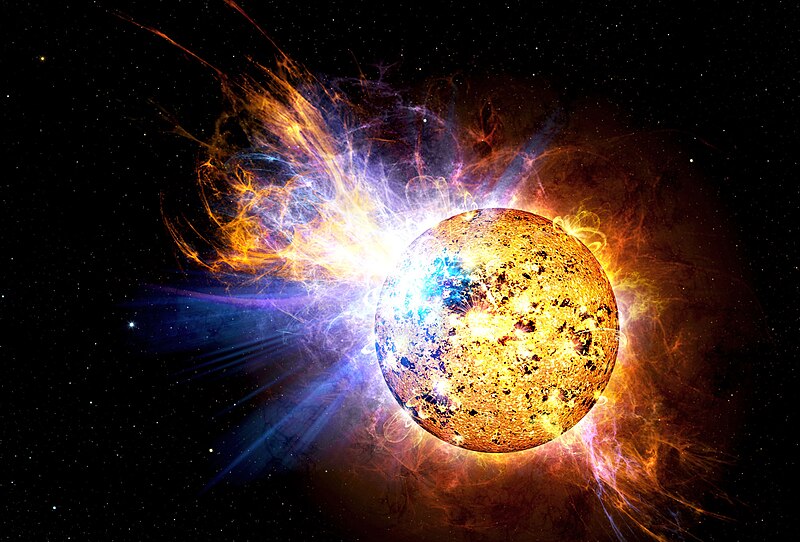File:Nasa EV Lacertae 250408.jpg

Original file (2,000 × 1,355 pixels, file size: 485 KB, MIME type: image/jpeg)
| This is a file from the Wikimedia Commons. The description on its description page there is shown below.
|
|
Summary
| DescriptionNasa EV Lacertae 250408.jpg |
Explosión de EV Lacertae English: Featured image of NASA. Explosión de EV Lacertae: For many years scientists have known that our sun gives off powerful explosions, known as flares, that contain millions of times more energy than atomic bombs. But when astronomers compare flares from the sun to flares on other stars, the sun's flares lose. On April 25, 2008, NASA's Swift satellite picked up a record-setting flare from a star known as EV Lacertae. This flare was thousands of times more powerful than the greatest observed solar flare. But because EV Lacertae is much farther from Earth than the sun, the flare did not appear as bright as a solar flare. Still, it was the brightest flare ever seen from a star other than the sun. Español: Imágen destacada en la NASA: Durante muchos años, los científicos creían saber qué producía las poderosas explosiones, conocidas como llamaradas, que contienen millones de veces más energía que una bomba atómica. |
| Source | NASA Image of the Day Gallery |
| Author | Casey Reed/NASA |
Licensing
| Public domainPublic domainfalsefalse |
| This file is in the public domain in the United States because it was solely created by NASA. NASA copyright policy states that "NASA material is not protected by copyright unless noted". (See Template:PD-USGov, NASA copyright policy page or JPL Image Use Policy.) |  | |
 |
Warnings:
|
Captions
Items portrayed in this file
depicts
File history
Click on a date/time to view the file as it appeared at that time.
| Date/Time | Dimensions | User | Comment | |
|---|---|---|---|---|
| current | 23:32, 23 October 2023 | 2,000 × 1,355 (485 KB) | Юрий Д.К. | original quality |
File usage
The following page uses this file:
Metadata
This file contains additional information, probably added from the digital camera or scanner used to create or digitize it.
If the file has been modified from its original state, some details may not fully reflect the modified file.
| Width | 3,311 px |
|---|---|
| Height | 2,243 px |
| Bits per component |
|
| Compression scheme | LZW |
| Pixel composition | RGB |
| Orientation | Normal |
| Number of components | 3 |
| Horizontal resolution | 300 dpi |
| Vertical resolution | 300 dpi |
| Data arrangement | chunky format |
| Software used | Adobe Photoshop CS2 Windows |
| File change date and time | 10:19, 19 May 2008 |
| Color space | Uncalibrated |
| Image width | 2,000 px |
| Image height | 1,355 px |
| Date and time of digitizing | 06:19, 19 May 2008 |
| Date metadata was last modified | 06:19, 19 May 2008 |
| IIM version | 2 |